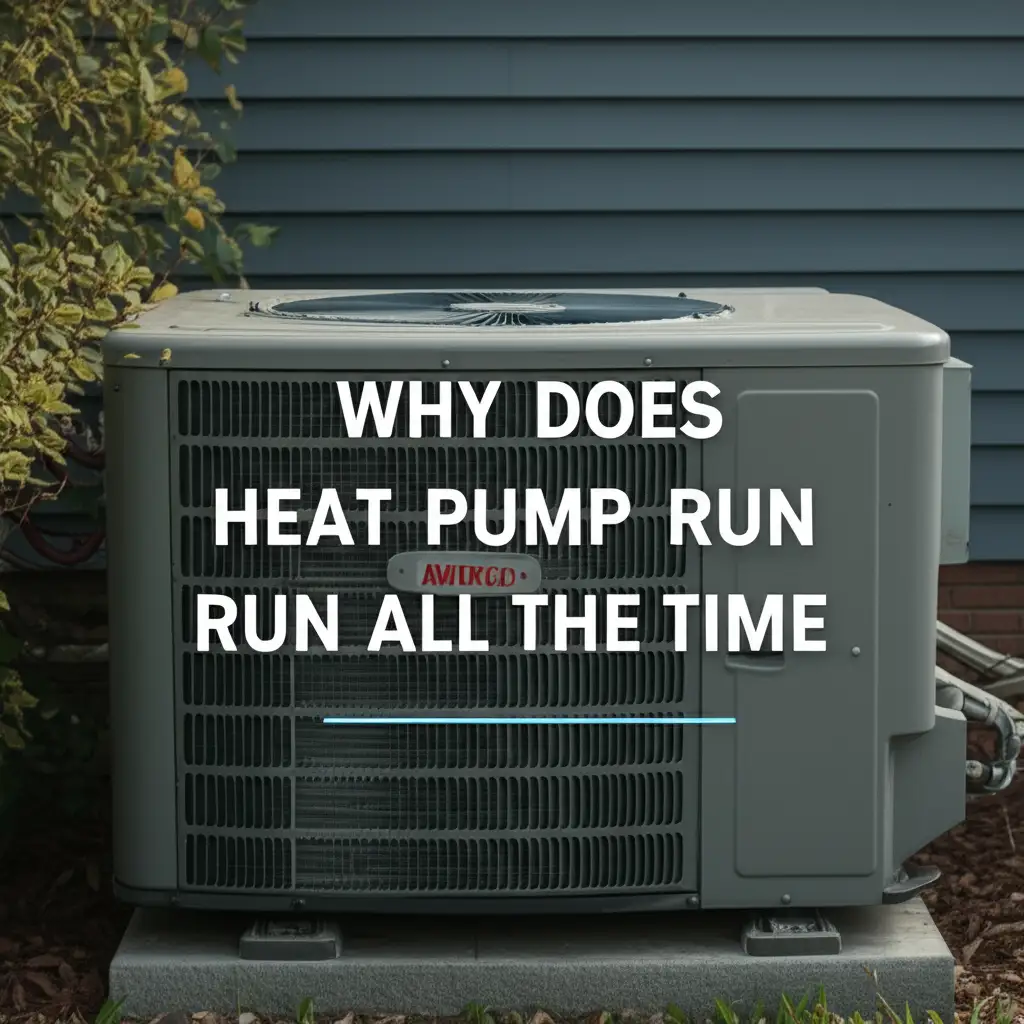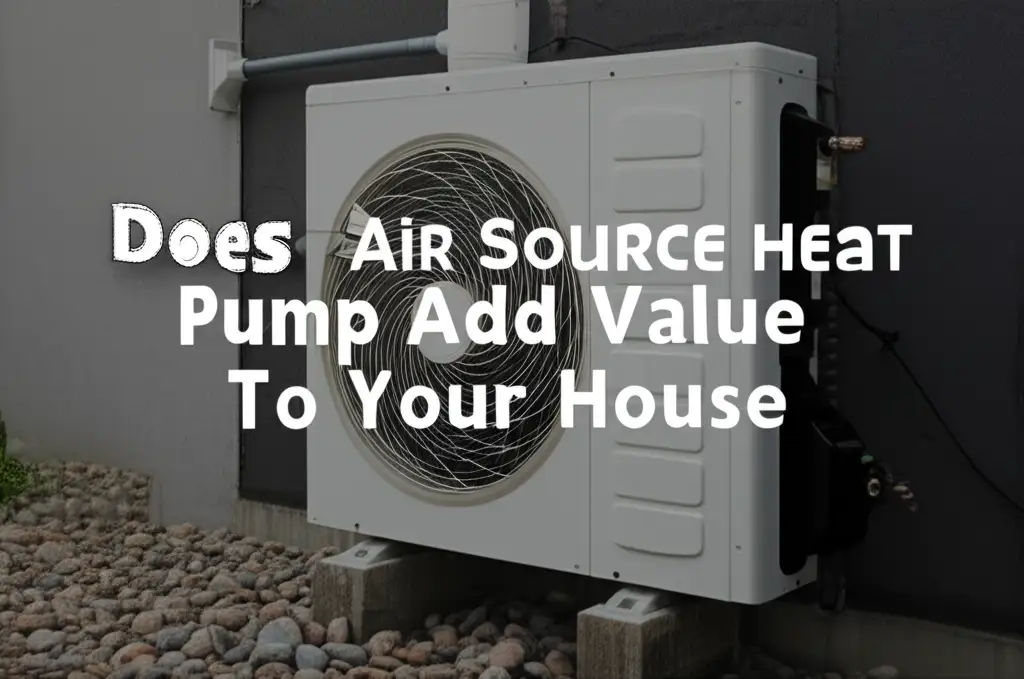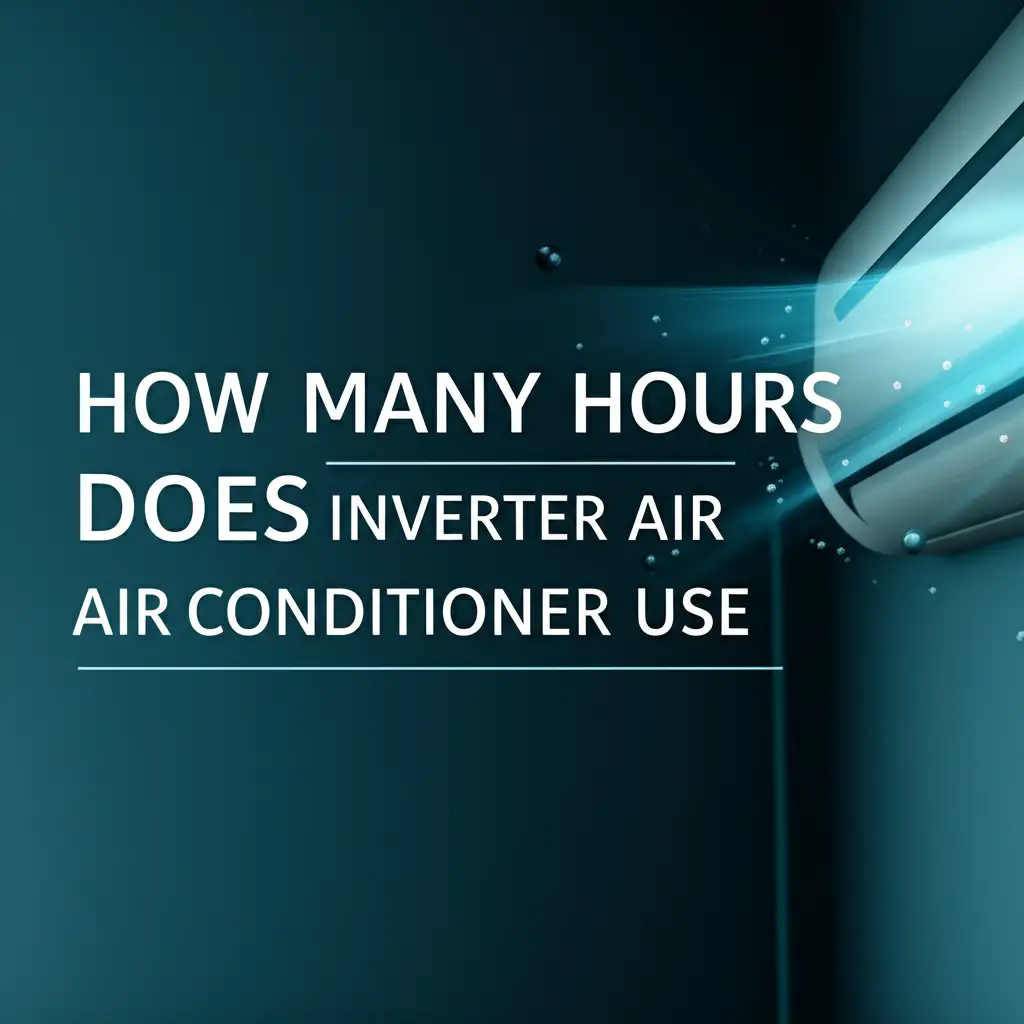· Katria Melrose · Home Improvement · 16 min read
Does My Heat Pump Qualify For Tax Credit

Does My Heat Pump Qualify For Tax Credit? Here’s How To Know
Did you recently upgrade to a heat pump, or are you considering one? Many homeowners invest in these efficient systems. A common question arises: “Does my heat pump qualify for a tax credit?” This is a smart question to ask. Federal tax credits can significantly reduce the cost of your home energy upgrades.
Understanding eligibility for a heat pump tax credit helps you save money. It also helps you make informed choices for your home. This article explains the rules, defines eligible equipment, and shows you how to claim your credit. We will cover efficiency standards, installation requirements, and how different heat pump types fit the criteria.
Takeaway:
- Your heat pump may qualify for a significant federal tax credit.
- Eligibility depends on specific efficiency ratings (SEER2, EER2, HSPF2).
- The system must be new and installed in your primary residence by a qualified professional.
- You must claim the credit using IRS Form 5695 when filing your taxes.
Clear, Concise Answer to the Main Query:
Yes, your heat pump likely qualifies for a federal tax credit if it meets specific energy efficiency standards set by the IRS, is a new installation in your primary residence, and is put into service between 2023 and 2032. The credit can cover up to 30% of the cost, with a maximum annual limit of $2,000 for qualified heat pumps.
Understanding the Federal Heat Pump Tax Credit
Investing in a heat pump can make your home more energy-efficient. The United States government wants to encourage homeowners to adopt cleaner energy solutions. This is why federal tax credits for heat pumps exist. These incentives aim to lower your upfront costs.
The primary federal incentive for heat pumps comes from the Energy Efficient Home Improvement Credit. This credit is part of the Inflation Reduction Act (IRA) of 2022. It offers tax benefits for various home energy improvements. This includes qualified heat pump installations.
The credit covers 30% of the cost of eligible heat pumps and installation. This means if your heat pump costs $8,000 to purchase and install, you could get $2,400 back. However, there is an annual limit of $2,000 for this specific credit on heat pumps. This tax credit applies to systems placed in service from January 1, 2023, through December 31, 2032.
This incentive helps offset the expense of upgrading your heating and cooling system. It supports homeowners choosing greener options. Knowing about this credit helps you plan your home improvements wisely. You can see more details about this process at how to qualify for heat pump tax credit.
Which Heat Pump Types Are Eligible?
Not all heat pumps qualify for the federal tax credit. The credit applies to specific types of heat pumps. You must install these systems in your primary residence. It is important to know the distinctions before purchasing.
Air-Source Heat Pumps
Air-source heat pumps are common choices for many homes. These systems move heat between your house and the outside air. They provide both heating and cooling. To qualify, air-source heat pumps must meet strict energy efficiency ratings. These ratings vary based on the climate zone where you live.
For instance, systems installed in northern climates have different requirements than those in southern climates. Most air-source heat pumps need to be ENERGY STAR certified. They also need specific Seasonal Energy Efficiency Ratio 2 (SEER2), Energy Efficiency Ratio 2 (EER2), and Heating Seasonal Performance Factor 2 (HSPF2) ratings. You can learn more about specific air-source requirements at does air source heat pump qualify for tax credit.
Geothermal Heat Pumps
Geothermal heat pumps use the stable temperature of the earth to heat and cool your home. These systems are very efficient. They typically have higher upfront costs compared to air-source models. However, they qualify for a more generous tax credit. Geothermal heat pumps are eligible for a 30% credit with no annual dollar limit.
This means you can get 30% of the entire cost back. This includes the equipment and installation. This credit also applies to systems put into service through 2032. The specific efficiency standards for geothermal units are generally less complex than for air-source units because of their inherent efficiency.
Heat Pump Water Heaters
Heat pump water heaters are also eligible for the tax credit. These units extract heat from the air to heat water. They are much more efficient than traditional electric resistance water heaters. Like air-source heat pumps, they must meet specific Uniform Energy Factor (UEF) ratings.
The tax credit for heat pump water heaters is also 30% of the cost. This is subject to the same $2,000 annual maximum limit. This limit is shared with other qualified home energy improvements like air-source heat pumps. Check the ENERGY STAR website for specific eligible models.
Meeting the Strict Efficiency Requirements
To get the federal heat pump tax credit, your system must meet strict energy efficiency standards. These standards ensure you install a truly high-performing unit. The requirements depend on the type of heat pump and its installation date.
Decoding SEER2, EER2, and HSPF2 Ratings
For air-source heat pumps, the key metrics are SEER2, EER2, and HSPF2. These are updated ratings that better reflect real-world performance.
- SEER2 (Seasonal Energy Efficiency Ratio 2): Measures cooling efficiency over a typical cooling season. A higher number means more efficient cooling.
- EER2 (Energy Efficiency Ratio 2): Measures cooling efficiency at a specific outdoor temperature (typically 95°F). This shows peak cooling efficiency.
- HSPF2 (Heating Seasonal Performance Factor 2): Measures heating efficiency over a typical heating season. A higher number means more efficient heating.
The exact minimum ratings vary by climate zone. For systems installed from January 1, 2023:
- Northern Climate Zone: Air-source heat pumps must meet or exceed 16.0 SEER2, 9.0 EER2, and 9.5 HSPF2.
- Southern Climate Zone: Air-source heat pumps must meet or exceed 15.2 SEER2, 10.0 EER2, and 8.1 HSPF2.
These ratings are important because they directly impact your eligibility. Always confirm the ratings of the specific model you choose with your installer. Your contractor should provide equipment specifications that show these numbers.
Cold Climate Heat Pump Qualifications
Some manufacturers offer specialized “cold climate” heat pumps. These units are designed to operate efficiently even in very low outdoor temperatures. While the general efficiency standards apply, cold climate performance is also important for user satisfaction. These systems often exceed the minimum federal requirements.
For heat pump water heaters, the key efficiency metric is the Uniform Energy Factor (UEF). The minimum UEF rating for eligibility is 2.2 UEF for units with a capacity of 55 gallons or less. For units over 55 gallons, the UEF requirement is typically even higher. You can find lists of qualifying heat pump models on the ENERGY STAR website. Always verify your chosen model’s certification.
Remember, the goal of these requirements is to ensure you install a heat pump that genuinely reduces your home’s energy consumption. This benefits both your wallet and the environment.
Beyond Efficiency: Installation and Residence Rules
Meeting efficiency standards is crucial, but it’s not the only requirement. Several other rules apply to qualify for the heat pump tax credit. These rules ensure the system is properly installed and serves its intended purpose.
Professional Installation is Key
The tax credit generally requires that the heat pump be installed by a qualified contractor. This means a professional who is licensed and experienced in HVAC installations. DIY installations typically do not qualify for the credit. A professional installation ensures the system operates correctly and safely. It also helps maximize its efficiency.
Your installer should provide documentation. This includes an invoice detailing the equipment cost and installation labor. Keep these records carefully. They prove the work was done by a professional. This documentation is essential if the IRS ever audits your claim.
Primary Residence Rule
The heat pump must be installed in a home that serves as your primary residence. This means the home where you live most of the time. You cannot claim the credit for heat pumps installed in rental properties or second homes. The intent is to incentivize energy efficiency in your main living space.
The home must also be located in the United States. This includes condominiums, co-ops, and manufactured homes. As long as it is your primary residence, it typically qualifies. If you own multiple properties, be sure the heat pump is installed at the address you declare as your primary home for tax purposes.
New Equipment and Placed-in-Service
The heat pump must be new equipment. You cannot claim the credit for used heat pumps. The system must also be “placed in service” during the tax year you claim the credit. This means the installation must be complete, and the heat pump must be ready for use. It does not matter when you bought the heat pump, only when it was installed and functioning.
These rules help define clear boundaries for eligibility. They prevent misuse of the credit. Always confirm these points with your tax professional or installer before making your purchase. This ensures your investment genuinely qualifies for the federal tax benefit. For specific rules related to different types of HVAC systems, you might compare requirements, such as those for Carrier air conditioners.
Claiming Your Credit: The IRS Process
Once you have purchased and installed your qualifying heat pump, the next step is claiming the tax credit. This involves specific forms and careful record-keeping. The process is straightforward if you have the right documentation.
Required Documentation
You must keep detailed records of your heat pump purchase and installation. The IRS does not require you to submit these documents with your tax return. However, you must have them available if the IRS requests them. Important documents include:
- Manufacturer’s Certificate: This document states that the heat pump meets the federal efficiency requirements. Your installer or the manufacturer’s website should provide this.
- Sales Invoice/Receipt: This needs to clearly show the cost of the heat pump equipment.
- Installation Invoice: This document details the labor costs for installing the heat pump. Remember, installation costs are generally included in the 30% credit for heat pumps.
- Proof of Payment: Keep records like bank statements or credit card statements.
These documents are crucial for substantiating your claim. Organize them well in case of an audit.
Filing Your Taxes with Form 5695
To claim the Energy Efficient Home Improvement Credit, you must complete IRS Form 5695, “Residential Energy Credits.” This form is used to calculate the amount of your credit. You will attach it to your Form 1040, U.S. Individual Income Tax Return.
On Form 5695, you will enter the cost of your qualified heat pump. The form then helps you calculate the 30% credit. It also applies the maximum annual credit limit of $2,000 for heat pumps. If you made other qualified energy-efficient home improvements in the same year, you would list those on the same form.
It is a nonrefundable credit. This means it can reduce your tax liability to $0. However, you will not get a refund for any credit amount exceeding your tax liability. If you cannot use the full credit in one year, you cannot carry forward the unused portion to future tax years. Always consult a tax professional for personalized advice. They can ensure you properly claim all eligible credits.
Navigating Additional Incentives: Stacking Opportunities
Federal tax credits are a great starting point, but they are not the only financial incentives available. Many homeowners can combine the federal heat pump tax credit with state, local, or utility company rebates and programs. This layering of benefits can significantly reduce your overall cost.
State and Local Programs
Many states and local municipalities offer their own incentives for energy-efficient home improvements. These can include grants, low-interest loans, or direct rebates. For example, some states have programs specifically designed to promote heat pump adoption. These programs might offer hundreds or even thousands of dollars back.
You can often find information about state and local programs on your state’s energy office website or your city’s planning department. These programs often have their own specific eligibility criteria. Be sure to check them carefully. You might need to use specific contractors or purchase certain brands to qualify.
Utility Company Rebates
Your local electric or gas utility company might also offer rebates for installing high-efficiency heat pumps. Utility companies encourage energy efficiency because it reduces strain on their grid. These rebates are typically direct payments or bill credits. They can be very easy to claim.
Check your utility company’s website or contact their customer service department. Ask about energy efficiency programs or heat pump rebates. They often have lists of approved equipment. They also have clear instructions on how to apply for the rebate.
Beware of Stacking Limitations
While you can often combine federal credits with other incentives, be aware of “stacking limitations.” In most cases, federal tax credits are calculated on your net out-of-pocket expense. This means if you receive a rebate from your utility company, that rebate typically reduces your qualified cost for the federal tax credit.
For example, if a heat pump costs $10,000 and you receive a $1,000 utility rebate, your qualified cost for the federal tax credit would be $9,000. The federal credit would then be 30% of $9,000 ($2,700), capped at $2,000. It is important to understand this. It helps you calculate your true savings. Always confirm with the program administrators if their incentives can be stacked with federal credits.
Researching all available programs is worth the effort. It can make your heat pump investment even more affordable.
Common Pitfalls and Pro Tips for Maximizing Your Credit
Claiming a tax credit should be simple, but common mistakes can occur. Knowing what to watch for helps ensure you get your full benefit. Here are some pitfalls to avoid and tips to maximize your heat pump tax credit.
Pitfalls to Avoid
- Incorrect Efficiency Ratings: Do not assume your heat pump qualifies just because it is new. Always confirm the specific SEER2, EER2, and HSPF2 ratings. Ensure these meet the federal requirements for your climate zone. A slight miss in these numbers can disqualify the entire purchase.
- DIY Installation: Generally, the tax credit requires professional installation. Attempting to install the heat pump yourself will likely make it ineligible for the credit. Save all invoices from your certified installer.
- Missing Documentation: Forgetting to keep the manufacturer’s certificate, sales invoice, or installation records can be a problem. The IRS may ask for proof. Without it, your claim could be denied.
- Claiming for Non-Primary Residence: Remember, the credit applies only to your primary residence. Do not claim it for a rental property or a vacation home.
- Exceeding Annual Limits Unknowingly: The $2,000 annual limit for heat pumps and certain other home energy improvements can be confusing. If you install a heat pump and new windows in the same year, your combined credit for these items cannot exceed $2,000. Geothermal heat pumps have no limit. Understand how your improvements interact.
Pro Tips for Maximizing Your Credit
- Choose Carefully: Select a heat pump model that clearly meets or exceeds the federal efficiency standards. Work with an installer familiar with these requirements. They can guide you to compliant models.
- Get Itemized Invoices: Ensure your installer provides a detailed invoice. It should clearly separate the cost of the equipment from the labor. Also, it should list the specific model number and its efficiency ratings.
- Keep Excellent Records: Create a dedicated folder for all heat pump-related documents. This includes quotes, invoices, manufacturer’s specifications, and proof of payment. This makes tax filing easier and provides backup if needed.
- Consult a Tax Professional: Before filing, speak with a qualified tax advisor. They can confirm your eligibility and help you complete Form 5695 accurately. They can also advise on how the credit interacts with your overall tax situation.
- Research Local Incentives: Always check for state, local, and utility rebates. These can further reduce your out-of-pocket costs. Combining incentives can be powerful. Just be aware of how they affect the federal credit calculation.
- Understand the “Placed in Service” Date: The credit applies to the tax year when the heat pump is fully installed and operational. Plan your installation accordingly if you aim for a specific tax year.
By being diligent and informed, you can ensure your heat pump investment truly pays off with a significant tax credit.
Frequently Asked Questions (FAQ)
1. What is the maximum heat pump tax credit amount? The maximum federal tax credit for a qualifying heat pump, including installation costs, is $2,000 per year. This is part of the Energy Efficient Home Improvement Credit. It covers 30% of the cost of eligible heat pumps. This limit applies to air-source heat pumps and heat pump water heaters. Geothermal heat pumps have a separate 30% credit with no dollar limit.
2. Do I need an ENERGY STAR certified heat pump? Yes, for air-source heat pumps and heat pump water heaters, the equipment generally must be ENERGY STAR certified. It must also meet specific efficiency ratings (SEER2, EER2, HSPF2 for heat pumps; UEF for water heaters) relevant to your climate zone. Checking the ENERGY STAR website for qualified models is a good first step.
3. Can I claim the credit for a heat pump on a rental property? No, the federal heat pump tax credit, specifically the Energy Efficient Home Improvement Credit, applies only to new heat pumps installed in your primary residence. It is not available for rental properties or second homes. The home must be located in the United States.
4. What records should I keep for my heat pump tax credit? You should keep detailed records. This includes the manufacturer’s certification statement for the heat pump, a copy of the sales invoice showing the equipment cost, and the installation invoice showing labor costs. Also, keep proof of payment. These documents support your claim if the IRS asks for verification.
5. Are geothermal heat pumps eligible for the same credit? Geothermal heat pumps are eligible for a different, more generous credit. They qualify for the Residential Clean Energy Credit. This credit is also 30% of the cost. However, it has no annual dollar limit. This means you can claim 30% of the full cost of equipment and installation for geothermal systems.
6. Does the credit cover installation costs? Yes, for air-source heat pumps and heat pump water heaters, the 30% tax credit includes both the cost of the qualified equipment and the labor costs for its installation. This applies up to the $2,000 annual maximum limit. For geothermal heat pumps, the 30% credit also covers equipment and installation, with no dollar limit.
Conclusion
Understanding if your heat pump qualifies for a tax credit can save you a significant amount of money. The federal government offers substantial incentives through the Energy Efficient Home Improvement Credit. This program helps homeowners upgrade to more energy-efficient systems. Your new heat pump can qualify for a credit of up to $2,000, covering 30% of the cost.
Remember, key factors determine your eligibility. These include the heat pump’s efficiency ratings, professional installation, and its placement in your primary residence. By paying attention to these details and keeping good records, you ensure a smooth claiming process. Do not miss out on this opportunity to reduce your energy costs and improve your home’s efficiency. Always consult a tax professional for personalized advice. Start your research today and make your energy-efficient upgrade truly pay off.
- heat pump tax credit
- energy efficiency
- federal tax credit
- IRA tax credit
- home energy rebates
- HVAC tax credit





